통합 검색
통합 검색
- 작성자 hide
- 조회수 130
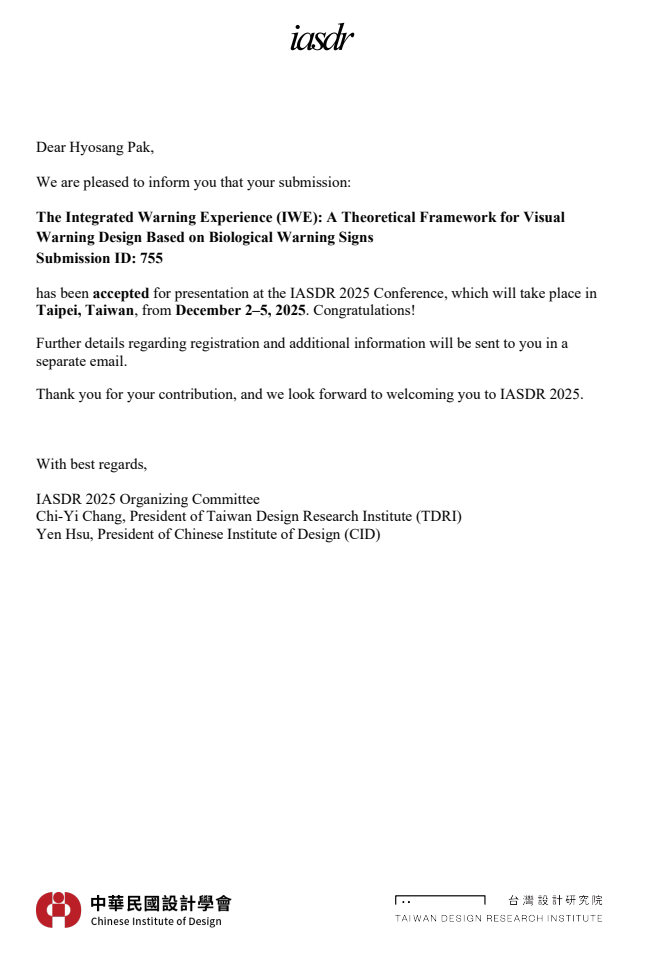
IASDR 2025 국제디자인학술대회 구두발표 확정
IASDR(International Association of Societies of Design Research) 2025 국제디자인학술대회가 2025년 12월 2일부터 12월 5일까지 대만 타이베이 송산문화창의공원(Songshan Cultural and Creative Park)에서 열립니다. IASDR은 전 세계 디자인 연구자들이 모여 다양한 연구 성과와 아이디어를 나누는 자리로, 디자인 방법론, 사용자 경험, 사회적 디자인, AI와의 융합 등 폭넓은 주제를 다루는 국제 학회입니다.
연구실에서 박효상 박사연구원의 “The Integrated Warning Experience(IWE): A Theoretical Framework for Visual Warning Design Based on Biological Warning Signs
무엇보다도 우리 연구실 연구원들이 직접 세계 여러 연구자들과 만나 이야기를 나누고, 연구를 더욱 발전시킬 기회를 얻는 소중한 자리라고 할 수 있습니다. 앞으로도 이런 경험들이 모여 연구실의 성과와 분위기를 한층 더 풍성하게 만들어갈 것이라 기대됩니다.
주제: The Integrated Warning Experience(IWE): A Theoretical Framework for Visual Warning Design Based on Biological Warning Signs
[연구 요약]
본 연구는 기존 시각 경고 시스템이 색상, 명도, 대비 등 ‘현저성(conspicuity)’ 중심으로 설계되어 있음에도 불구하고, 사용자의 해석과 행동 유도 측면에서 한계를 보이는 점에 주목한다. 특히 노인, 저학력자, 비문해자, 청각장애인 등 인지적 취약 계층이나 소음·시각적 복잡성이 높은 산업 환경에서 이러한 한계는 더욱 심각하게 드러난다. 이에 본 논문은 인간 인지 과정을 인지–해석–행동의 단계로 통합적으로 포괄하는 새로운 이론적 틀, 즉 통합 경고 경험(Integrated Warning Experience, IWE)을 제안한다.
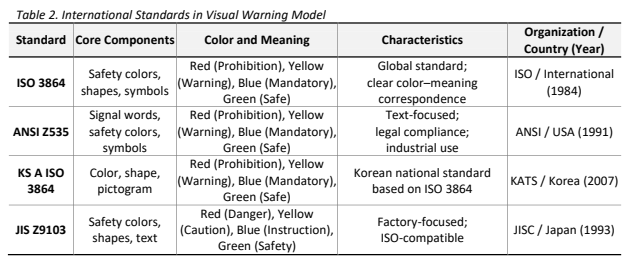
연구는 국제 표준(ISO, ANSI, KS, JIS) 및 Communication–Human Information Processing(C-HIP) 모델을 검토하여 기존 경고 시스템의 구조적 한계를 규명하였다. 기존 모델은 색상과 기호를 통해 주의를 끌지만, 사용자의 배경 지식과 문해 능력에 따라 해석 오류가 빈번하게 발생하며, 위기 상황에서 즉각적 회피 행동을 유도하기에는 부족하다. 이를 보완하기 위해 연구는 자연계의 포식–피식 관계에서 나타나는 생물학적 경고 표현 전략을 분석하였다. 예컨대 독개구리의 고채도 체색, 복어의 체적 팽창, 도마뱀의 갑작스러운 프릴 전개, 문어의 위협 시 발광 패턴 등은 학습 여부와 상관없이 본능적 회피를 유발한다. 이러한 전략은 단순히 신호의 강도를 높이는 것이 아니라, 배경과의 ‘구별성(distinctiveness)’을 극대화하는 방향으로 진화해 왔다는 점에서 시사점을 제공한다.
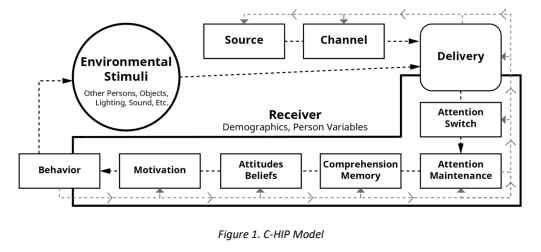
또한 연구는 실제 산업·재난 사고 사례를 검토하였다. 화재 경보에서 청각 장애인이 대피하지 못한 사례, 지하철 소음 환경에서 시각 경고 부재로 인한 사망 사고, 문자 중심 경고로 인한 비문해자의 인지 실패 등이 대표적이다. 이러한 사례는 청각 중심의 경고 체계가 사용자 집단에 따라 치명적 위험을 초래할 수 있음을 보여주며, 시각 기반의 직관적·포용적 경고 설계가 절실함을 뒷받침한다.
분석을 토대로 연구는 IWE 모델을 단계별 행동 순서로 재구성하였다. 먼 거리(Encounter–Detection)에서는 고채도·고명도 대비와 단순한 형태를 통해 빠른 인지와 주의 전환을 유도한다. 근거리(Identification–Approach)에서는 반복 패턴, 색상 전환, 상징적 형상을 활용하여 의미 해석과 행동 결정을 지원한다. 마지막으로 위험 회피 후에는 시각적 피드백을 제공하여 사용자에게 상황 종료와 인지적 안정을 보장한다. 이 과정에서 ‘현저성’과 ‘구별성’을 균형 있게 적용하여, 배경과의 명확한 대비, 거리 기반 변조, 패턴의 점진적 변화 등을 설계 요소로 제안하였다.
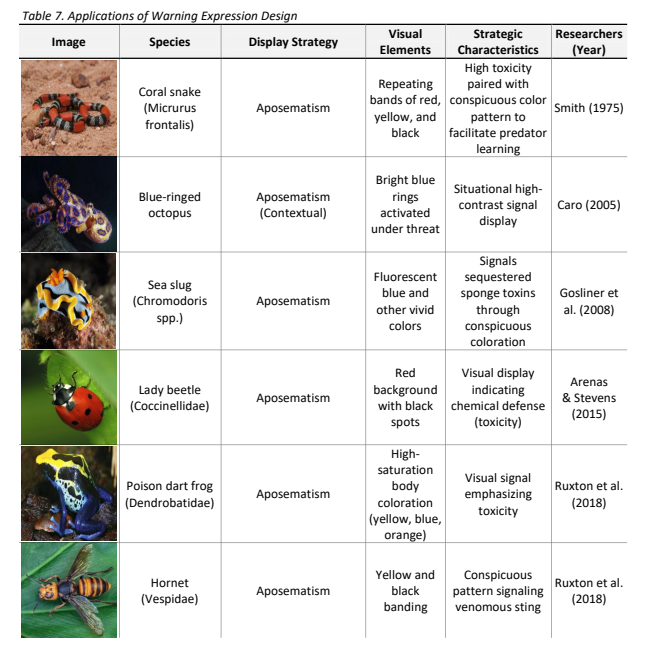
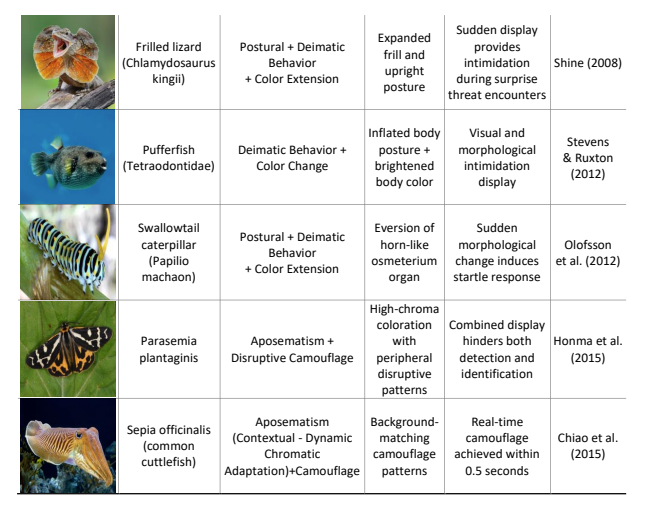
연구의 이론적 기여는 네 가지로 요약된다. 첫째, 기존 현저성 중심의 경고 설계를 넘어 ‘구별성’ 개념을 도입하여 인지적 명료성을 높였다. 둘째, 생물학적 경고 전략을 근거로 거리 기반 단계적 설계 원리를 제시하였다. 셋째, 배경 환경과의 대비 및 피드백 메커니즘을 통합하여 실제 상황 적합성을 강화하였다. 넷째, 청각장애인·비문해자 등 취약 집단의 사용성을 고려하여 산업 현장 및 인간–로봇 상호작용(HRI) 환경에 적용 가능한 보편적 경고 체계를 마련했다는 점에서 의의가 있다.
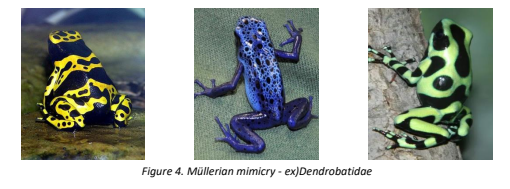
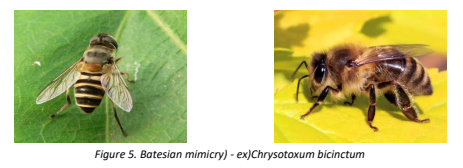
본 연구는 이론적 탐구에 국한되어 있어, 실제 사용자 실험이나 정량적 검증은 추후 과제로 남는다. 향후 연구에서는 색채 대비 효과에 대한 행동 반응 실험, 시선 추적 기반의 주의 전환 분석, 자동화된 경고 디자인 툴킷 개발, 청각·촉각·동작 기반의 다감각적 확장 등을 제안한다. 이를 통해 IWE 모델은 향후 직관적이고 포용적인 차세대 경고 시스템 구축을 위한 기초 틀로 발전할 수 있을 것이다.
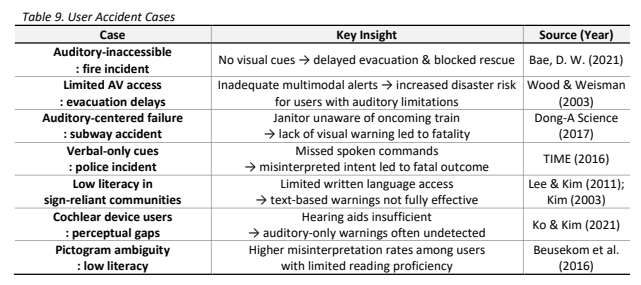
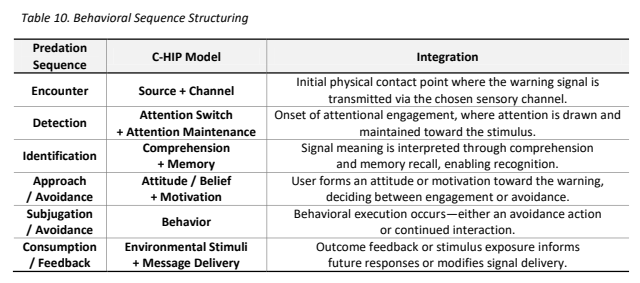
This study addresses the limitations of existing visual warning systems, which are predominantly designed around conspicuity—using high chroma, brightness, and strong contrasts—yet often fail to support accurate interpretation and prompt behavioral responses. These shortcomings become particularly critical for cognitively vulnerable groups such as the elderly, low-literacy users, non-native speakers, and individuals with hearing impairments, as well as in industrial contexts with high noise levels or visually complex backgrounds. To overcome these challenges, this paper introduces the Integrated Warning Experience (IWE), a theoretical framework that comprehensively covers the user’s perceptual process of recognition, interpretation, and behavioral response.
The research first reviews international standards (ISO, ANSI, KS, JIS) and the Communication–Human Information Processing (C-HIP) model to identify structural limitations of conventional approaches. Existing systems attract attention through colors and symbols but frequently impose interpretive burdens, leading to miscomprehension and delayed response. To address this, the study examines biological warning strategies observed in nature, such as the high-saturation body coloration of poison dart frogs, the sudden volumetric inflation of pufferfish, the frill display of lizards, and the threat-induced iridescence of octopuses. These strategies induce instinctive avoidance independent of prior learning and highlight the importance of distinctiveness—clear separation from background—alongside conspicuity.
The analysis also incorporates real-world accident cases, including delayed evacuation of hearing-impaired individuals during fires, fatal train accidents caused by lack of visual substitutes for auditory warnings, and misinterpretations of text-heavy alerts among low-literacy communities. These cases underscore the systemic risks of auditory-centered warning frameworks and emphasize the need for inclusive, visually grounded approaches.
Based on these insights, the study proposes the IWE model, which reorganizes the behavioral sequence of warning perception. At long distances (Encounter–Detection), high chroma/brightness contrasts and simple geometric edges facilitate rapid recognition and attention capture. At close distances (Identification–Approach), patterns, symbolic shapes, and color transitions enhance semantic interpretation and guide action. Finally, after the risk is resolved, visual feedback signals closure and reassurance. By balancing conspicuity and distinctiveness, the model integrates contrast with environmental background, distance-dependent modulation, and progressive pattern transformation as design parameters.
The theoretical contributions can be summarized in four points. First, the model introduces distinctiveness as a complement to conspicuity, improving interpretability and response accuracy. Second, it provides a biologically grounded, stage-specific design framework based on distance perception. Third, it incorporates background contrast and feedback mechanisms absent in previous models. Fourth, it emphasizes accessibility for cognitively vulnerable populations, suggesting applicability in industrial safety and Human–Robot Interaction (HRI) environments.
This research is limited as a theoretical proposal without experimental or quantitative validation. Future directions include behavioral experiments on color-contrast thresholds, eye-tracking in context-rich environments, development of automated design toolkits, and multimodal expansion integrating auditory, tactile, and motion cues. Collectively, these directions aim to advance the IWE model toward the creation of intuitive, inclusive, and context-sensitive warning systems.

댓글 0